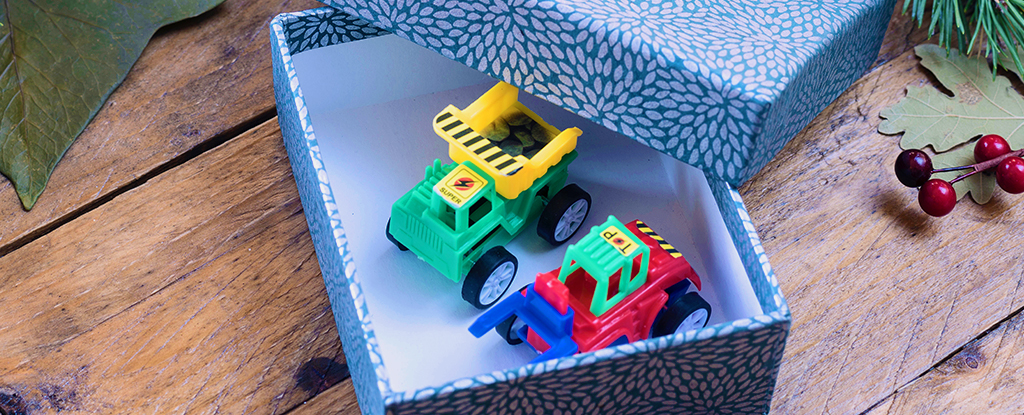
As the festive season draws near, numerous kids feel the excitement and compile a wishlist of toys, eagerly anticipating Santa’s gifts.
It’s natural for children to engage with toys as part of their development journey. Toys play a crucial role in fostering curiosity, encouraging learning, and sparking imaginative play. Moreover, they provide valuable opportunities for socialization with peers.
Regrettably, a staggering 80 percent of all toys find their way into landfills, incinerators, or the ocean. The toy industry contributes to this environmental crisis, utilizing 40 tonnes of plastic for every US$1 million in revenue and leaving an excessive carbon footprint.
While toys play a role in a child’s development, they also pose a threat to their health and well-being through pollution. This paradox is perpetuated by advertisers, and children, in their vulnerability, are susceptible to the persuasive tactics employed.
Advertisers are well aware that children play an inevitable role in the consumer decision-making cycle, enticing them to persuade their parents to part with hard-earned money. The key lies in establishing an emotional connection to toys in the minds of children, creating a spiral of brand-associated desire through tie-ins with food, fun, clothing, and music.
A striking illustration of this issue is the widespread use of non-recyclable loom bands, a popular wrist-worn accessory (source). This global children’s craze, often employed to express solidarity with various causes, has resulted in a substantial influx of silicone-based rubber finding its way into landfills and the ocean each year.
In addition to the effectiveness of emotional marketing on both children and adults, studies indicate that very young children often struggle to distinguish between a television program and an advertisement. This challenge extends to banner advertising on game sites, presenting a similar issue.
It’s not until the ages of nine to 11 that children start developing brand awareness and an understanding of the social value associated with brand power. While they are beginning to grasp the intentions behind branding during this period, they are also susceptible to peer pressure and often wield what psychologists term their “pester power.”
Children are susceptible to these strategies, leading to an increasing influx of plastic into the environment. However, insights from psychological research indicate that a child’s developmental capacity to comprehend the climate crisis and its consequences could serve as a potential remedy.
Providing children with the opportunity to actively participate in decisions that could be detrimental to the environment allows parents to mitigate a child’s vulnerability to aggressive advertising.
Give children more agency
In response to a request for recommendations to enhance children’s rights laws by the United Nations, the Psychological Society of Ireland recently took the lead. In our submission, the team and I addressed the mental health issues stemming from environmental harm that impacts children.
In collaboration with Elaine Rogers and Alexis Carey, I co-authored a review paper that synthesizes psychological research and leverages the insights from the UN’s global consultation involving 16,000 children. This extensive consultation revealed that children of various ages not only grasp the perils of climate change but also readily propose viable solutions.
Given the chance, children and adolescents readily express empathy and distress towards the climate crisis, sometimes experiencing predispositions to anxiety. This climate anxiety may be directed towards themselves and their families, future generations, or the broader environment and other species. These findings suggest that children’s understanding of the climate crisis has the potential to counteract their vulnerability to advertising that exacerbates such concerns.
Based on our examination of how children’s engagement can foster solutions to environmental challenges, I’ve compiled recommendations that may prove beneficial to parents and guardians during this Christmas season.
Get the whole family involved
Initiate discussions with your child about the potential environmental effects of toys. For example, some renowned brands have transitioned to using plastic derived from ethanol extracted from sugar cane.
When shopping for toys, seek out eco-labels and explore suppliers carrying Green Toy brands. Additionally, inquire about the educational value of a toy and assist your child in evaluating the pros and cons. Consider striking a balance between these purchases and more mainstream ones.
Consider exploring ways for your children to engage in national and international discussions on climate change. The UN has recently emphasized the legal obligation of advertisers to ensure that marketing is not misleading to children, placing significant importance on children’s participation in these matters. The UN has also created a child-friendly version (accompanied by a video) outlining its stance on children’s rights and the environment.
Toy banks
Be on the lookout for designated drop-off points for gently used toys. Toy banks can begin with contributions from family, friends, and neighbors. Consider reaching out to local residential committees and municipal authorities to initiate a toy bank if one is not already established in your vicinity.
Inspire your children to curate a collection of gently used toys to donate to local charity shops in the lead-up to Christmas.
Encourage longevity
Toys with personal stories tend to capture children’s interest for more extended periods, especially when it comes to character toys.
Consider giving a doll or teddy bear a “holiday” or “hospital stay” to bring back your child’s enthusiasm for the toy upon its return.
Safe spaces
Establishing safe spaces for dialogue at home, school, or in the community is instrumental in encouraging your children to think critically about how product marketing or merchandise may inadvertently contribute to environmental harm. It’s essential that these discussions feel secure and non-confrontational.
It’s crucial to recognize that children serve as the influencers of purchasing power, wielding the ability to persuade parents, caregivers, and even Santa to deliver the toys they select.
Empowering your children to make decisions like adults regarding the toys they desire or wish to keep can contribute to mitigating the adverse effects of advertising on their well-being.
This article has been republished from <a href=”https://theconversation.com/advertising-toys-to-children-is-an-environmental-nightmare-heres-how-parents-can-deal-with-it-217992″>The Conversation</a> under a Creative Commons license.





